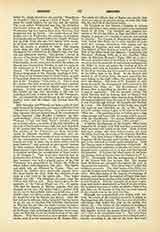

Leros, titular see of the Cyclades, suffragan of Rhodes. According to Strabo (XIV, i, 6), this island must have been a colony of Miletus; it next became independent before falling under the Roman domination. According to the poet Phocylides, the inhabitants of Leros had, without exception, an evil reputation (Strabo, X, v, 12). It was here that Aristagoras, the leader of the Ionian revolt against the Persians (499 B.C.), was advised to hide from the vengeance of Darius. The island possessed a famous sanctuary of Artemis the Virgin, on the site of which the present convent of Parthenia and the adjoining church are supposed to be built. Lequien (Oriens Christianus, I, 945) mentions four of its bishops: John, in 553; Sergius, in 787; Joseph, in 869; Callistus, in the sixteenth century. The list could be completed, for Leros has never ceased to be an episcopal see, and there is still a metropolitan of Leros and the neighboring island Calymnos, dependent upon the Greek Patriarchate of Constantinople. Eubel (“Hierarchia catholica medii nevi”, Munster, I, 315) also mentions two Latin bishops of the fourteenth century. A possession of the Knights of Rhodes, the island sustained a siege in 1505, and was taken by the Turks in 1523; it was recovered by the Venetians, who razed its fortifications, in 1648; and it once more fell into the possession of the Osmanli. Leros now forms a caza of the sanjak of Chio, in the vilayet of Rhodes. The island is about nine and a quarter miles long by seven and a half wide. It is barren, mountainous, and rich only in marble quarries; and has about eight thousand inhabitants, all Greeks. The Catholic inhabitants are under the jurisdiction of the Prefecture Apostolic of Rhodes.
S. VAILHE

